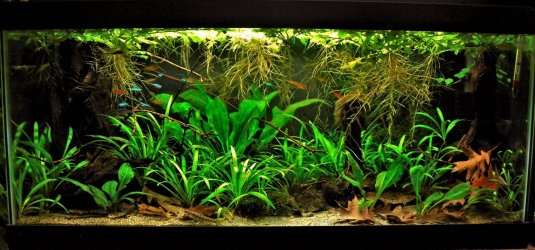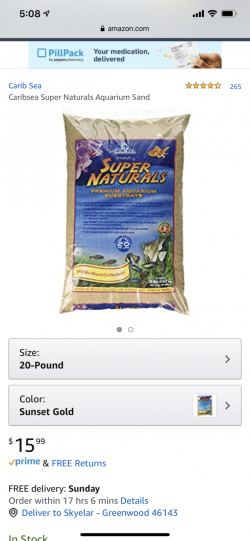How much play sand is needed? I might do it at some point but only if it doesn’t cause any problems and is easy to clean. Would it not get sucked up in a gravel vacuum or be washed away with water when cleaning it via cup?
The depth of the sand is important; you want enough for the natural colony of various bacteria to establish and live (the substrate is far more important that the filter for this), but not so deep that you have anaerobic problems beyond what is normal and necessary (in other words, not problematic). Plants that are rooted in the substrate obviously have a bearing on the depth. I tend to start out with roughly 1.5 inches (3-4 cm) of washed sand when spread evenly across the tank floor. Then I might push it a bit deeper in the back and shallower in the front, but I always have about 1 inch (2.5 cm) along the front as the minimum. Play sand comes in 25kg (50 lb) bags (at least in North America) and one bag will be enough for 3 or 4 10g tanks, so you will have spare but that is good, sometimes you might want to add a bit, or get another tank. It never goes bad.
As for cleaning, this really is not necessary if you are not overstocked or overfeeding. In some of my tanks I run the water changer above the sand, creating a sort of current that allows detritus to float up rapidly but not sand grains. Never dig down into the sand or it might all come up. In some tanks I rarely if ever do even this. I also have floating plants in all my tanks which makes a big difference as they suck up ammonia like a sponge.






